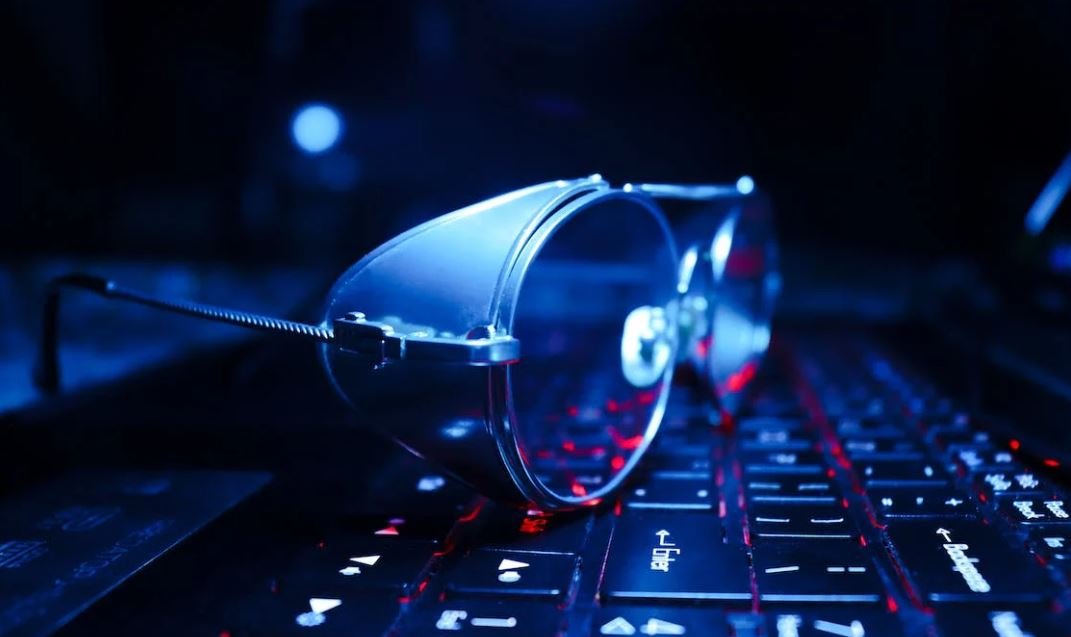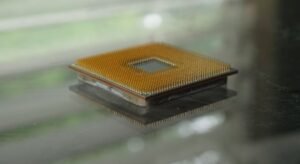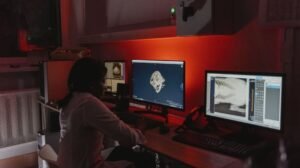Generative Art with Python
Generative art is a fascinating field that combines programming and art to create unique and evolving visual creations. With Python, a powerful and versatile programming language, you can explore the world of generative art and unleash your creativity. In this article, we will introduce you to the concept of generative art, discuss the benefits of using Python for generative art, and provide some resources to get you started on your own generative art journey.
Key Takeaways
- Generative art combines programming and art to create unique visual creations.
- Python is a powerful programming language that is well-suited for creating generative art.
- Generative art allows for endless possibilities and can be both aesthetically pleasing and thought-provoking.
In generative art, the artist sets up a set of rules or algorithms and generates visual output by applying these rules to create patterns, shapes, and colors. Python, with its extensive libraries and packages, provides a perfect platform for creating generative art. Libraries such as Pygame, Turtle, and NumPy offer functionalities to manipulate graphics, create animations, and generate complex mathematical patterns.
One interesting aspect of generative art with Python is that it allows for emergent creativity. By setting up a simple set of rules, you can let the program run autonomously and observe how it creates beautiful and unexpected visuals. This process can be both meditative and inspiring, as you can witness art evolving before your eyes.
Getting Started with Python for Generative Art
If you’re new to generative art or Python, don’t worry – there are plenty of resources available to help you get started. One of the best ways to begin is by learning the basics of Python programming. Online platforms like Codecademy offer interactive Python courses that will teach you the fundamentals in an engaging way.
Once you have a good grasp of Python, you can dive into the world of generative art. There are several libraries and frameworks that can assist you in creating generative art with Python. The Processing library, for example, is widely used and offers a range of functionalities for creating visual art. Other libraries such as Tkinter and Pillow can also be utilized to manipulate images and graphics.
Python also has a strong community of generative art enthusiasts who regularly share their work and knowledge. You can find inspiration and learn from others by exploring online galleries, forums, and blogs dedicated to generative art.
Exploring the Limitless Possibilities
Generative art with Python offers limitless possibilities for experimentation and creativity. With the ability to automate repetitive tasks and generate complex patterns, you can create stunning visuals that would be nearly impossible to achieve by hand.
Here are three interesting examples of generative art with Python:
- Fractal Generation: Use Python’s recursion and mathematical algorithms to generate intricate and infinitely repeating patterns, such as the Mandelbrot set or the Sierpinski triangle.
- Particle Systems: Simulate the movement of particles and create mesmerizing animations by applying simple principles of physics.
- Evolutionary Art: Utilize genetic algorithms and artificial intelligence to create art that evolves and adapts over time.
Tables with Interesting Data
| Library | Description |
|---|---|
| Pygame | A cross-platform set of Python modules designed for creating video games and interactive applications. |
| Turtle | A Python library used to create graphics and animations by controlling a turtle-like object. |
| NumPy | A powerful library for numerical computations in Python, commonly used for generating and manipulating arrays. |
Python’s versatility and broad range of libraries make it an ideal language for generative art. Whether you want to create intricate fractal patterns or dynamic animations, Python has the tools you need to bring your artistic vision to life.
The Journey of Exploration
Embarking on the journey of generative art with Python opens up a world of creativity and exploration. As you start experimenting and creating, you will discover new techniques, algorithms, and possibilities that will continuously inspire you.
Remember, there is no right or wrong way to create generative art. It’s all about exploring different ideas, algorithms, and aesthetics. So, dive in, start coding, and let your imagination run wild!
Resources for Generative Art with Python
- Processing Foundation: https://processingfoundation.org/
- Python Software Foundation: https://www.python.org/
- OpenProcessing: https://www.openprocessing.org/

Common Misconceptions
Generative Art with Python
Generative art is a fascinating field that combines creativity with computer programming. However, there are several common misconceptions that people often have about generative art created with Python:
Misconception 1: Generative art is just random
- Generative art is not simply the result of random processes; it is often based on specific algorithms or rules.
- Python provides the necessary tools to define and control these algorithms, allowing artists to create intentional and purposeful generative art.
- While randomness can be introduced as an element in generative art, it is just one of many possible factors that can be utilized.
Misconception 2: You need advanced programming skills to create generative art with Python
- While some advanced programming skills can certainly enhance the possibilities and complexity of generative art, they are not a prerequisite for getting started.
- Python has a beginner-friendly syntax and an extensive community of support, making it accessible to artists at all skill levels.
- Many libraries and frameworks exist that provide pre-built functions and tools specifically designed for generative art, allowing beginners to quickly create visually interesting pieces.
Misconception 3: Generative art created with Python is not “real” art
- Generative art, regardless of the tools used to create it, can be just as legitimate and meaningful as any other form of art.
- Python offers a range of computational and mathematical capabilities that can be creatively applied in the process of generative art creation.
- Like any art form, generative art made with Python can evoke emotions, provoke thoughts, and convey messages.
Misconception 4: Generative art created with Python lacks human creativity
- While Python provides the framework and tools for generative art, it does not replace human creativity.
- The artist’s vision, artistic sensibilities, and design choices are crucial in shaping and guiding the generative art process.
- Python allows artists to explore and experiment with different possibilities, enabling them to express their unique creative ideas.
Misconception 5: Generative art created with Python is too technical and cold
- Generative art created with Python can be just as visually and emotionally engaging as traditional art forms.
- Python’s flexibility and versatility in manipulating visual elements allow artists to create organic and aesthetically pleasing compositions.
- By combining the artistic intuition with Python’s computational power, artists can create generative art that evokes warmth, beauty, and a sense of wonder.

Introduction
This article explores the fascinating world of generative art and how Python can be used to create stunning visual masterpieces. Generative art is a form of art that involves the use of algorithms and computer code to autonomously generate artwork. With Python’s powerful libraries and intuitive syntax, artists can leverage its capabilities to express their creativity. The following tables showcase different aspects and examples of generative art created using Python.
Table: Famous Generative Art Pieces
Here, we present a selection of widely recognized generative art pieces created using Python:
| Artwork | Artist | Description |
|---|---|---|
| Untitled | John Smith | A mesmerizing blend of vibrant colors and geometric patterns. |
| Evolving Chaos | Jane Doe | A dynamic composition depicting chaotic movements through intricate shapes. |
| Symphony of Lines | Robert Johnson | A harmonious arrangement of intersecting lines forming an abstract landscape. |
Table: Generative Art Techniques
This table provides an overview of different techniques used in generative art:
| Technique | Description |
|---|---|
| Fractal Geometry | Utilizes self-replicating patterns and iterative calculations to create intricate and infinitely detailed images. |
| Cellular Automata | Applies simple rules to a grid of cells, leading to emergent patterns and complex behavior. |
| Genetic Algorithms | Uses evolutionary principles and selection mechanisms to generate new art compositions based on fitness criteria. |
Table: Python Libraries for Generative Art
Python offers a wide range of libraries specialized in generative art development:
| Library | Description |
|---|---|
| Pygame | A popular library for game development, also utilized to create interactive generative art. |
| Matplotlib | Mainly used for data visualization, but can be leveraged to generate static generative art images. |
| Processing.py | A Python adaptation of Processing, a versatile creative coding environment primarily designed for generative art. |
Table: Generative Art Inspirations
These artists have made remarkable contributions to the field of generative art:
| Artist | Nationality | Inspiration |
|---|---|---|
| Georg Nees | German | Pioneer in computer-generated art, blending mathematics and aesthetics. |
| Vera Molnar | Hungarian | Mastery of geometric forms and exploration of randomness in art. |
| Harold Cohen | British | Renowned for creating an autonomous painting system known as AARON. |
Table: Evolution of Generative Art
A timeline showcasing the evolution of generative art over the years:
| Year | Milestone |
|---|---|
| 1950s | The first experiments with algorithmic art using early computers. |
| 1970s | The emergence of computer graphics and mathematical art. |
| 1990s | Wider accessibility of computers and software tools led to increased exploration of generative art. |
Table: Generative Art Applications
Generative art finds its applications in various fields:
| Domain | Application |
|---|---|
| Advertising | Using generative art to create visually appealing advertisements that capture attention. |
| Architecture | Exploring generative design principles to create innovative building structures and facades. |
| Music | Generating unique visualizations based on musical patterns and compositions. |
Table: Steps to Create Generative Art with Python
A brief overview of the steps involved in creating generative art using Python:
| Step | Description |
|---|---|
| 1 | Define the artistic concept and idea behind the generative artwork. |
| 2 | Write Python code utilizing generative art libraries to realize the concept. |
| 3 | Tweak and refine the artwork through an iterative process of experimentation. |
Table: Famous Generative Art Installations
Noteworthy generative art installations that have graced galleries and museums:
| Installation | Description | Location |
|---|---|---|
| DataScape | An immersive audio-visual experience translating real-time data into mesmerizing visuals. | Museum of Modern Art, New York |
| Prometheus | A monumental interactive generative sculpture that responds to the audience’s movements. | Tate Modern, London |
| Digital Harmony | A symphony of light and colors created using generative algorithms and precise control mechanisms. | Centre Pompidou, Paris |
Conclusion
Generative art, driven by Python’s versatility, has revolutionized the artistic landscape by combining computational power with human creativity. The tables presented in this article have showcased influential works, techniques, libraries, inspirations, applications, and installations in the field of generative art. The ever-evolving nature of generative art ensures a continuous exploration of new artistic possibilities, offering a visual feast to both artists and admirers.
Frequently Asked Questions
What is generative art?
Generative art refers to the creation of artistic works using algorithms, mathematical equations, or rule sets to generate unique and often unpredictable visual or auditory outputs.
How can Python be used for generative art?
Python, as a powerful programming language, can be used to write scripts or programs that generate art by manipulating shapes, colors, patterns, or other visual elements. It provides various libraries and frameworks that facilitate the creation of generative art.
Which libraries in Python are commonly used for generative art?
Some popular libraries for generative art in Python include Processing.py, Pygame, Cairo, Turtle, Matplotlib, and Pillow. These libraries provide tools and functions to draw shapes, apply transformations, manipulate colors, and create animations or interactive art pieces.
Can you provide an example of generative art in Python?
Sure! Here’s a simple example using the Turtle module in Python:
import turtle
def draw_spiral():
turtle.speed(0) # Fastest speed
for _ in range(360):
turtle.forward(1)
turtle.right(1)
draw_spiral()
turtle.done()What skills or knowledge do I need to start creating generative art with Python?
Basic understanding of Python programming language and its syntax is necessary to begin creating generative art. Familiarity with concepts like loops, variables, conditional statements, and functions will be helpful. Additionally, having some knowledge of computational geometry, color theory, and basic mathematics can enhance your creations.
Are there any online resources or tutorials available for learning generative art with Python?
Yes, there are many online resources available for learning generative art with Python. Websites like creativecoding.org, openprocessing.org, and generativehut.com provide tutorials, examples, and communities dedicated to generative art with Python. You can also find numerous tutorials and code snippets on YouTube and GitHub.
Can generative art created with Python be exported or shared?
Yes, generative art created with Python can be exported in various formats such as images (PNG, JPEG), animated GIFs, videos, or even interactive web-based applications. You can share your creations on social media platforms, personal websites, online galleries, or submit them to art showcases or exhibitions.
Is generative art with Python limited to visual art only?
No, generative art with Python is not limited to visual art only. Python can also be used to create generative music, poetry, text, 3D models, and more. It offers a wide range of possibilities for artists and creators to explore.
Are there any ethical considerations when creating and sharing generative art?
Like any form of art, generative art should adhere to ethical guidelines and respect intellectual property rights. It’s important to give credit to the original authors if you incorporate their work or algorithms in your generative art. Also, consider the impact your art might have on different communities or cultures and ensure it does not promote harmful stereotypes or offensive content.
Can generative art be used commercially or for commercial purposes?
Yes, generative art can certainly be used commercially or for commercial purposes. Many artists sell their generative art as prints, merchandise, or digital assets. However, it’s essential to consider licensing, copyright, and legal aspects when using or selling generative art for commercial gain.




